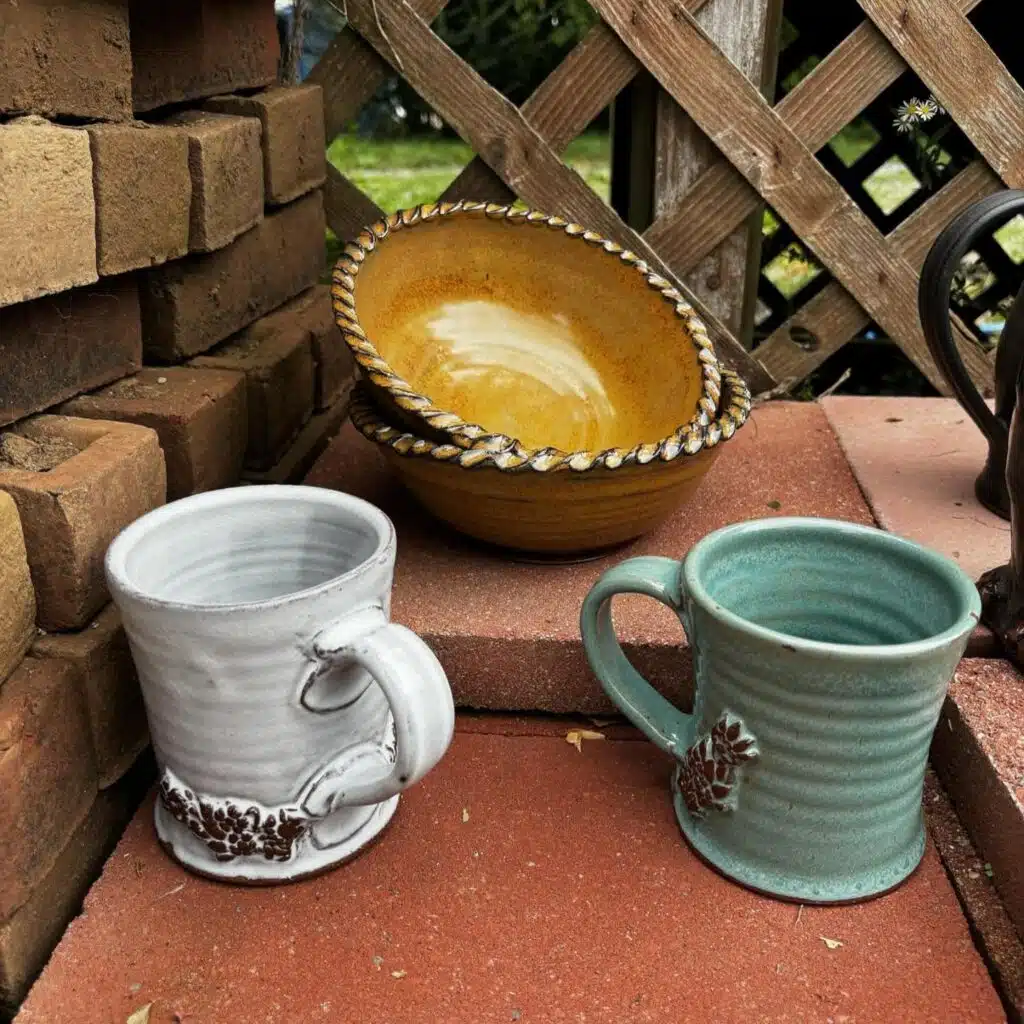On Saturday, December 14th, JCPL will be hosting the 2nd annual Artisan Fair! This festive event will feature curated vendors, live demonstrations, holiday music, and food trucks to celebrate the season.
Each vendor has been hand selected to display their craft or artwork, sharing their talents and unique gifts and products for the community to enjoy. It’ll be a perfect stop for those looking for thoughtful gifts, holiday cheer, and artistic inspiration.
One of these artisanal vendors is ARJO Pottery. Joseph Eastham and Arlo Rosdatter work together under this name to create a variety of inspired ceramic pieces. As we approach Artisan Fair, we’ve reached out to them to ask a few questions.
Can you tell us a little about your craft, and what has drawn you to it as an artist?
We primarily make functional pottery, which is made from clay. We form the clay into shapes on the wheel to make them into different eating and drinking wares like bowls and cups.
I [Joseph] was drawn to making pottery because I think it is one of the best ways to get handmade art into someone’s day-to-day life.
Arlo was drawn to pottery as a craft because of the time that pottery takes and the sometimes unpredictable nature that clay can have.
Pottery isn’t something that you can rush through in a night while you have the inspiration for it. It often takes multiple days or weeks to finish a piece, which is why most potters make things in batches or multiples.
During the time that it takes to make a piece, there are lots of opportunities for things to go wrong, and for a piece to break or come out different than you intended.
Learning to accept the losses and let go of a piece is something that potters have to learn pretty quickly. But sometimes that unpredictability can lead to some great outcomes.



What is something people may not know about your craft?
Something I think that a lot of people might not know about pottery is just how much chemistry is involved in the process. When a piece is fired, lots of little chemical reactions take place in order to harden the clay, and to turn the glaze into a coating of glass.
At these high temperatures (we fire to about 2200 F) lots of strange things start to happen, crystals can form in different patterns, and often the glaze will change color from the way that it was when you put it on the pot.
The best example of this would be a glaze that uses cobalt carbonate as its color. That glaze will go on a bright pink color, but when you pull it out of the kiln after it’s fired, it will be a deep rich blue.
The glaze on a pot is what introduces a lot of the unpredictability into the ceramics process.
If you could give advice to someone who is new to your craft, what would you say?
Our advice to someone that is just starting out is that ceramics, especially throwing, takes a lot of work and practice.
Learning how to let go of a piece that you aren’t entirely happy with, scraping it, and starting over completely is definitely something to strive for.
You can always make another one, and most of the time that next pot you make will be better than the one that you’ve been fiddling with for a long time. Try to not fire every piece that you make, and scrap the ones that you’re not pleased with.
Clay is infinitely recyclable until you fire it, so be sure that you want it to be around forever when you fire it.
Once you get to the place where you can center the clay on the wheel and pull a uniform wall, you can make pretty much anything you want to. It just takes a lot of patience and frustration to get to that point.
What can people expect to see from you at the Artisan Fair this year?
At the Artisan Fair this year, people can expect us to have lots of different kinds of tableware, mugs, cups, and Christmas ornaments.
Join Us at JCPL’s Artisan Fair
Stop by ARJO Pottery’s booth to see their handmade wares and watch live wheel throwing demonstrations.
You’ll find all this and more at JCPL’s Artisan Fair on December 14th from 10 am to 3 pm.
We’ll see you there!
